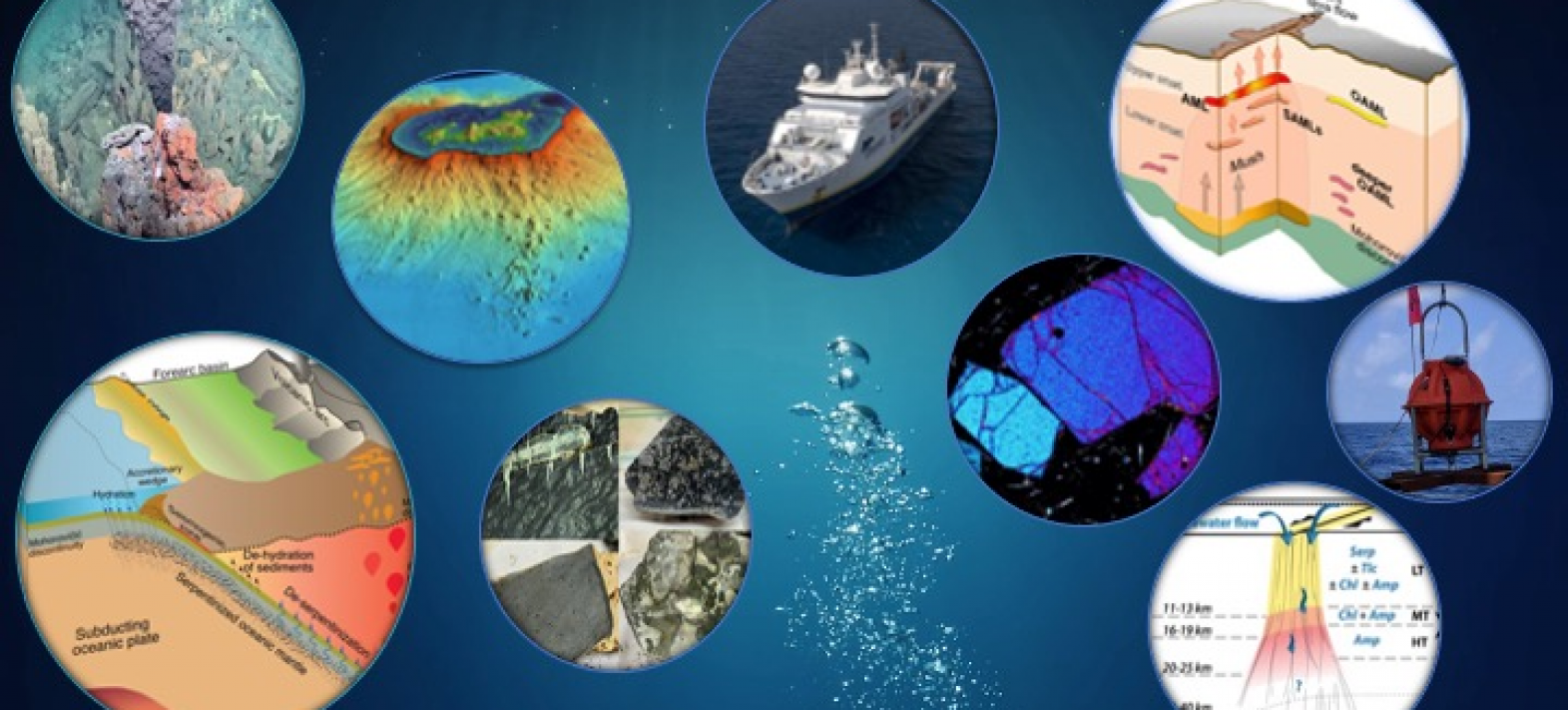Géosciences marines

Studying past and present geological signatures engraved in oceanic plates by Earth’s processes
Oceanic plates that shape the Earth are formed at mid-ocean ridges, then peppered by a myriad of seamounts, and finally recycled into Earth’s interior at oceanic trenches. To map the seafloor, scan through the oceanic plates, and examine the processes that operate within them, the Marine Geoscience Team members use a wide range of techniques, including structural geology, petrology, tectonics, numerical modeling, the study of potential fields, earthquakes, and controlled source seismology. Our research activity typically involves cruises aboard research vessels acquiring multidisciplinary data worldwide, which are then analyzed on-land using advanced methods. We maintain and develop deep-sea instrumentation and we are involved in operating seafloor observatories offshore the Azores and Mayotte. The main research activity is focused on the following three topics.
Oceanic plates are generated at mid-ocean ridges sliding along transform faults. Our work in the Pacific, Atlantic, and Indian oceans contributes to understanding how magmatic, tectonic, and hydrothermal processes interact and control the distribution and abundances of rock types in the newly formed plates, their chemistry, physical properties, and the heat and chemical exchanges with the overlying ocean. Members of our team also work on ophiolites, the ancient oceanic crust exposed on land serving as an analogue for deep seated processes in marine environments.
Our work at selected focus sites (Equatorial Atlantic, Mayotte, and worldwide subduction zones) addresses the nature of the base of the plate (the lithosphere-asthenosphere boundary or LAB) and how it evolves with age. Furthermore, it includes the long-lasting hydrothermal transformations of the plates in fracture zone domains, the dynamics of intraplate volcanism, and the petrological and geochemical transformations associated with plate bending and subduction into the mantle. Our research in subduction zones has been focused in understanding earthquake cycle and genetic links between volcanic and seismic/tectonic activity via geology /seismology and modelling in space and time.
Magmatic, hydrothermal, and tectonic processes significantly impact marine ecosystems and human activities, from time scales of a second to several years. Some examples are volcanic eruptions, seismic crises, and landslides. We record long-time series of the variations of key geophysical parameters (seismicity, seawater pressure at the seafloor, ocean sound, temperature of hydrothermal effluents) to understand these processes at seafloor observatories such as the Mayotte and EMSO-Azores on the Mid-Atlantic Ridge.
Vision for the future:
The rising recognition that our planet is a dynamic system with a complex interplay between its solid and fluid envelopes (solid Earth, Ocean, and Atmosphere), supporting and interacting with life, will play a key role in future research of our team. We will continue developing our expertise at the cutting edge of solid earth processes, advanced instrumentation, and data acquisition techniques in the fields of seismology, petrology, tectonics, and monitoring, and addressing key questions regarding magmatism, volcanism, geohazards, the structure and composition of the oceanic lithosphere, processes at the base of the plates, and the plate tectonic recycling machine. While our team will remain focused on solid Earth topics, we anticipate collaborating more closely with colleagues from other disciplines, such as oceanography, environmental studies, biology, and social sciences, aiming to a more integrated understanding of the Planet Earth, including the interactions and interdependences between its envelopes, and how they respond to anthropogenic forcing.




